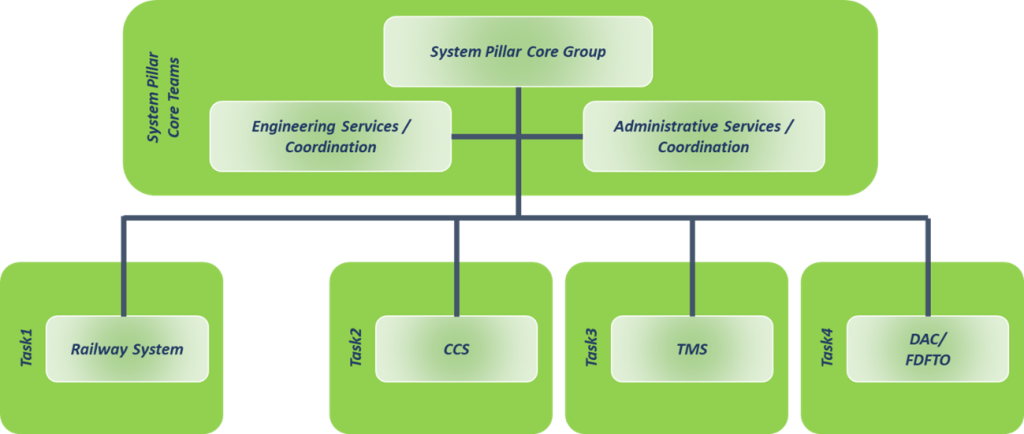 A body of the European Union
A body of the European Union
 A body of the European Union
A body of the European Union
The System Pillar Core Group, under the supervision of the EU-Rail Executive Director and/or his delegated Head(s) of Units, is leading the day-to-day work of the delivery of the System Pillar through the Tasks and with the support of Engineering and Administrative support services, manages progress of and collaboration between the Tasks.

The System Pillar Engineering Services / Coordination consist on:
The operational design work on Level 3/4 is different to Level 1/2 (see Link 5 “System Pillar System of Systems (SoS) approach”), and needs to be 1:1 mirrored with the system design work.
As such the organisational structure of the System Pillar will reflect the different tasks to be carried out, each one corresponding to a standardization area.

Task 1 is different since it is not specifying a “complete system with all of its requirements”, and it is not creating standardisation specifications by itself (the System Pillar is not standardising “everything” in the railway system). It selects improvements that need to be implemented in existing or new tasks. It defines selectively top-level targets for those requirements that are relevant for the standardisation work in the other Tasks.
In the beginning of the System Pillar there are three specific task areas where deeper system analysis than level 2 will be carried out:
Tasks 2,3, and 4 shall be connected by simple interfaces/process interactions that are defined early and are decoupling the dependencies in the development work. Each of them shall implement internally…
Besides of these Task-internal functions the Tasks (like CCS) have a large design scope and will need a substructure for their design work. This substructure is built by the “domains” and “cross-cutting roles”.